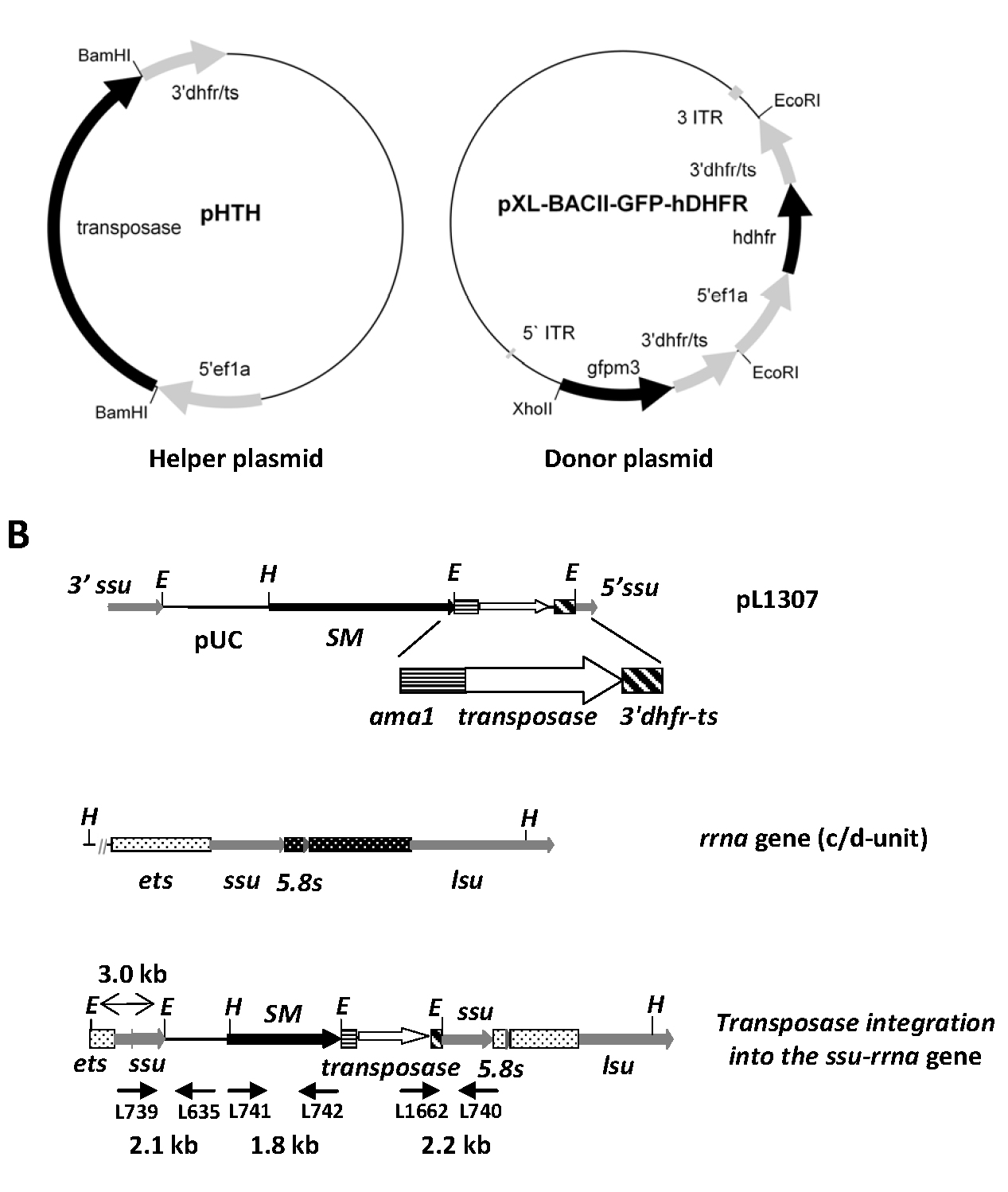SummaryRMgm-445
|
||||||||
 *RMgm-445
*RMgm-445| Successful modification | The parasite was generated by the genetic modification |
| The mutant contains the following genetic modification(s) | Other |
| Reference (PubMed-PMID number) |
Reference 1 (PMID number) : 21418605 |
| MR4 number | |
| top of page | |
| Parent parasite used to introduce the genetic modification | |
| Rodent Malaria Parasite | P. berghei |
| Parent strain/line | P. berghei ANKA |
| Name parent line/clone | P. berghei ANKA cl15cy1 |
| Other information parent line | |
| top of page | |
| The mutant parasite was generated by | |
| Name PI/Researcher | J. Fonager; C.J. Janse; A.P. Waters |
| Name Group/Department | Leiden Malara Research Group |
| Name Institute | Leiden University Medical Center |
| City | Leiden |
| Country | The Netherlands |
| top of page | |
| Name of the mutant parasite | |
| RMgm number | RMgm-445 |
| Principal name | piggyBac P5 (72) |
| Alternative name | |
| Standardized name | |
| Is the mutant parasite cloned after genetic modification | No |
| top of page | |
| Phenotype | |
| Asexual blood stage | Not tested |
| Gametocyte/Gamete | Not tested |
| Fertilization and ookinete | Not tested |
| Oocyst | Not tested |
| Sporozoite | Not tested |
| Liver stage | Not tested |
| Additional remarks phenotype | Mutant/mutation A transposase mediated piggyBac insertion into the open reading frame (ORF). PiggyBac insertion into the TTAA tetranucleotide insertion site TTAGTATATTAGGATTGTATTTAATATGATCATTTGCATTCTCG The piggyBac insert was identified using a TAIL PCR approach. The piggyBac insertion is expected to affect/disrupt expression of the gene. The presence of an insert in the ORF may therefore provide indirect evidence that the gene is NOT essential for blood stage development. However, neither expression or the phenotype of the mutant containing the insert have been analysed. PiggyBac-mediated insertion was achieved when parasites containing the transposase gene stably integrated into the genome (see RMgm-406) were transfected with piggyBac donor plasmids. In the paper describing this mutant two different approaches were used to obtain insertion of piggyBac elements into the genome of P. berghei.
|
 Other: Mutant parasite with another genetic modification
Other: Mutant parasite with another genetic modification| top of page | |
| Details of the target gene | |
| Gene Model of Rodent Parasite | PBANKA_0516800 |
| Gene Model P. falciparum ortholog | PF3D7_1033000 |
| Gene product | conserved Plasmodium protein, unknown function |
| Gene product: Alternative name | |
| top of page | |
| Description | |
| Short description of the modification | Transposase mediated piggyBac insertion into ORF |
| Description | See Additional Remarks Phenotype |
| top of page | |

